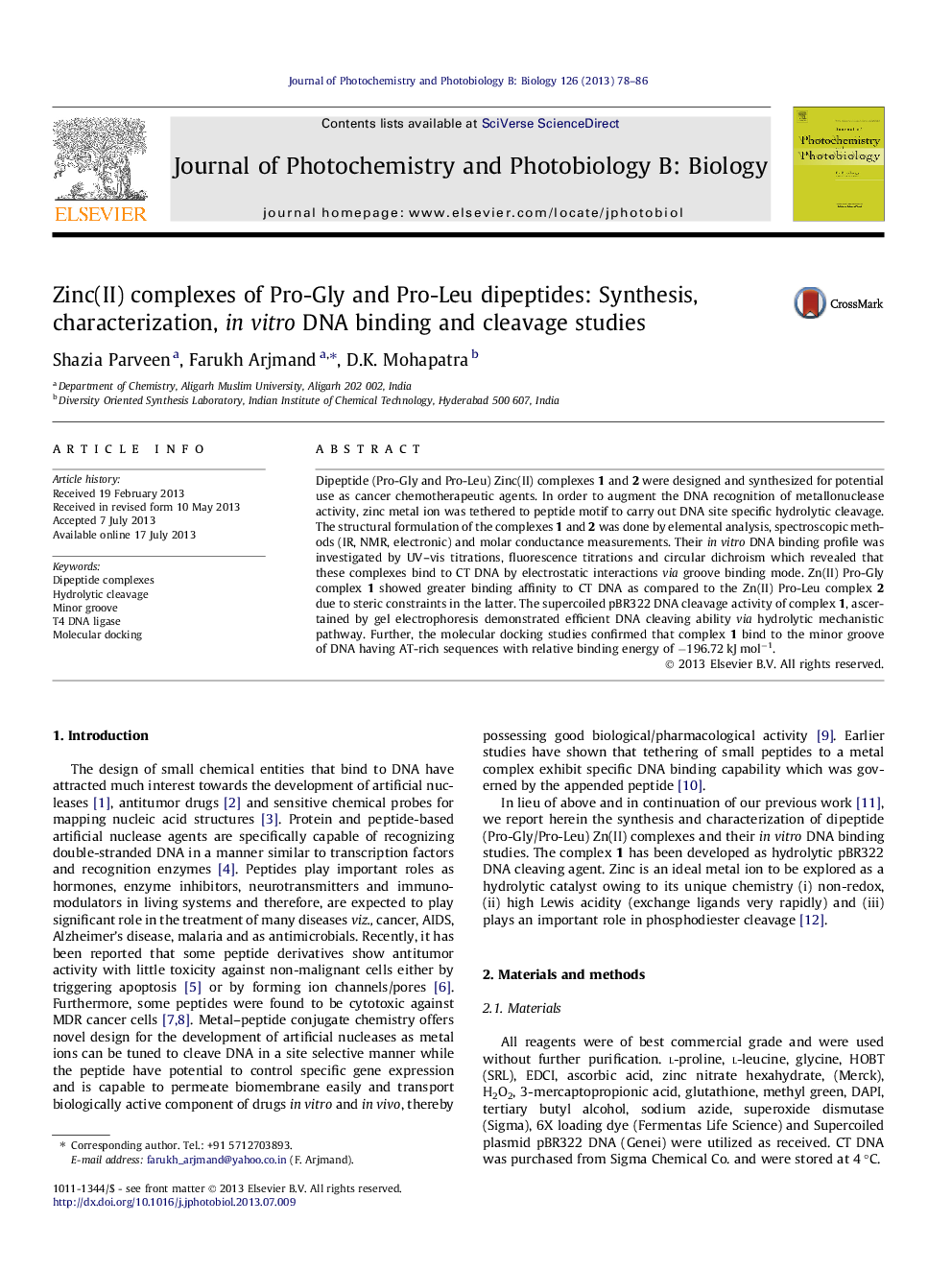| Article ID | Journal | Published Year | Pages | File Type |
|---|---|---|---|---|
| 30498 | Journal of Photochemistry and Photobiology B: Biology | 2013 | 9 Pages |
•Dipeptide-derived Zn(II) complexes.•In vitro DNA binding studies of complexes were carried out by various optical methods.•The interaction studies revealed that the complexes bind to the DNA preferentially via groove binding.•Complex 1 displayed efficient pBR322 DNA cleavage activity following hydrolytic pathway.
Dipeptide (Pro-Gly and Pro-Leu) Zinc(II) complexes 1 and 2 were designed and synthesized for potential use as cancer chemotherapeutic agents. In order to augment the DNA recognition of metallonuclease activity, zinc metal ion was tethered to peptide motif to carry out DNA site specific hydrolytic cleavage. The structural formulation of the complexes 1 and 2 was done by elemental analysis, spectroscopic methods (IR, NMR, electronic) and molar conductance measurements. Their in vitro DNA binding profile was investigated by UV–vis titrations, fluorescence titrations and circular dichroism which revealed that these complexes bind to CT DNA by electrostatic interactions via groove binding mode. Zn(II) Pro-Gly complex 1 showed greater binding affinity to CT DNA as compared to the Zn(II) Pro-Leu complex 2 due to steric constraints in the latter. The supercoiled pBR322 DNA cleavage activity of complex 1, ascertained by gel electrophoresis demonstrated efficient DNA cleaving ability via hydrolytic mechanistic pathway. Further, the molecular docking studies confirmed that complex 1 bind to the minor groove of DNA having AT-rich sequences with relative binding energy of −196.72 kJ mol−1.
Graphical abstractDNA binding and cleavage activity of complex 1.Figure optionsDownload full-size imageDownload as PowerPoint slide
